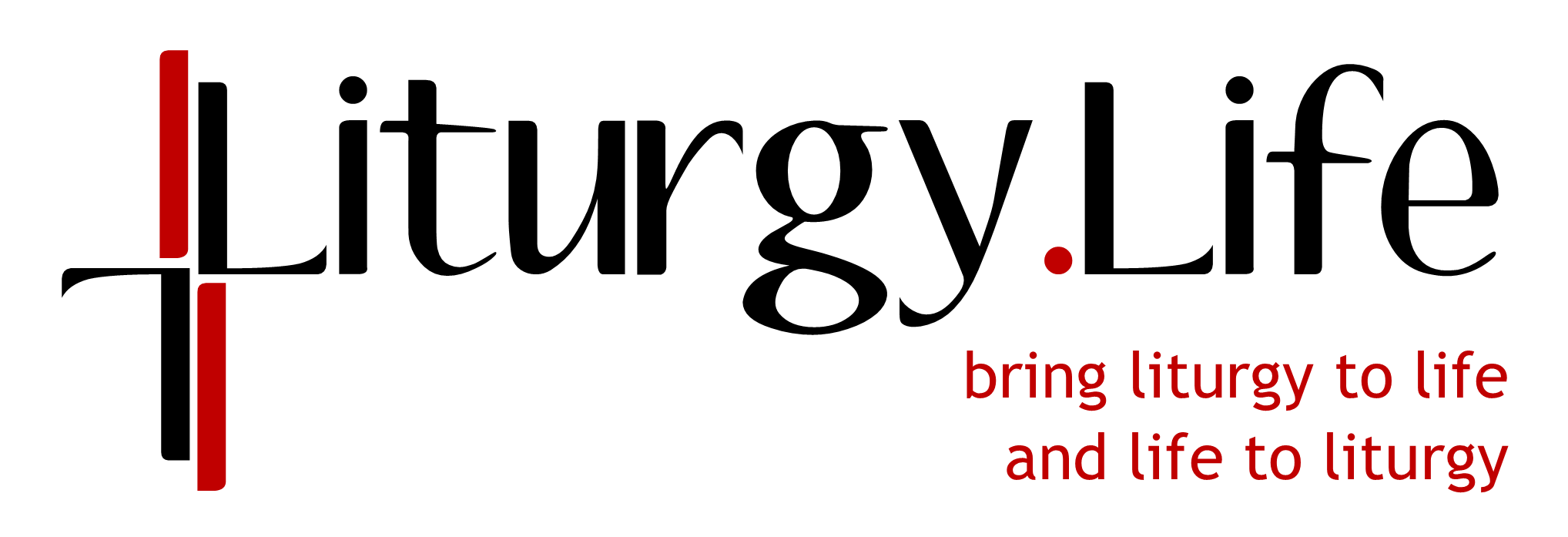Liturgy flows. It can flow like a stream on a summer day, or it can flow like molasses that has just been pulled from the refrigerator. How well or badly liturgy flows depends upon the skills of the pastoral leaders of the parish.
Everyone who is responsible for parish liturgy needs to first understand the structure of the liturgy. The structure is similar to that of a play or a film:
- An introduction
- Some action, leading to…
- A climax
- Some wrap-up, leading to…
- A conclusion
If we look at what happens at Sunday Mass through this lens, the climax is the moment of communion — the church sharing in the Body and Blood of Christ.
Everything we do before the climax should lead logically and emotionally to the moment of communion. Everything we do after the climax should be an obvious result of and conclusion to sharing in the Body and Blood of Christ.
If you are a liturgical leader in your parish, you have to ask yourself how you would prepare the liturgy is such a way that the assembly would feel compelled to come to the table for the Eucharistic banquet. How would you prepare the liturgy in such a way that the assembly knows in their bones what must now happen because they have dined at the Table of the Lord?
Introduction
The quest for the climactic moment begins at the beginning. Everything we do in the introductory rites should be done in a way that is going to set up the leading action of the liturgy, which in turn will set up the climax. In order for the leading action to work, the introductory section of the liturgy has to prepare the us to act as an assembly of God’s people.
Some things to consider include:
- Is the entrance to the church inviting?
- Are there greeters both outside and inside to welcome and assist people?
- Have the early arrivers been catechized to slide to the middle of the pew so latecomers don’t have to climb over them?
- Is the opening procession well organized, prayerful, and majestic?
- Is the opening song one that everyone sings with gusto?
- Is the opening prayer (collect) prayed with grace and dignity?
- Is there significant silence before the first reading as the assembly prepares to hear God’s word?
Leading action
When we celebrate Sunday Mass, there are two storytelling elements that lead to the climactic moment of gathering around the Table. The first is the proclamation of God’s word. Lectors need to proclaim the word so well that the assembly feels like they are actually in the story. This is an ongoing project for parishes. Lector preparation requires constant effort directed at training, encouraging, and critiquing each of your parish lectors. Lector preparation should include those who proclaim the gospel as well as the other readers.
The homily is a critical moment in the proclamation of God’s word. The quality of the homily impacts the flow of the Mass. A poor homily can change the flow of the liturgy from bubbling stream to sluggish molasses. A good or great homily, on the other hand, will supercharge the flow of the liturgy, moving the assembly into a fast current that propels them toward the Eucharist.
The second storytelling element is the Eucharistic Prayer. This is very close to the climax. The General Instruction of the Roman Missal calls the Eucharistic Prayer the “center and summit of the entire celebration.”
The Eucharistic Prayer is much, much more than just a prayer. Think of it as a story. But it is not an ordinary story. It is an epic. An epic is a long narrative that recounts the deeds of a hero or a heroic people. Share on XThe Eucharistic Prayer is much, much more than just a prayer. Think of it as a story. But it is not an ordinary story. It is an epic. An epic is a long narrative that recounts the deeds of a hero or a heroic people. Beowulf, the Odyssey, and Star Wars are examples of epics. Epics are traditionally forms of entertainment, but they are more than that. They are commemorations of the struggles and adventures of a hero. The function of a commemoration is to inspire those who hear the epic to perform heroic actions themselves.
The Eucharistic Prayer is a particular kind of commemoration, or remembering, that is called anamnesis. (Anamnesis is the Greek word for “memorial” or “remembering.”) Recall in the Eucharistic Prayer when the presider repeats the words of Jesus: “Do this in memory of me.” And then shortly after that, the deacon or priest says: “The mystery of faith.” And then we all sing the memorial acclamation. In other words, we acclaim the anamnesis or the commemoration. The anamnesis is the heart of the epic story we are telling in the Eucharistic Prayer. Christ died for us. God raised Christ from the dead. And Christ will bring us all to everlasting life.
Climax
If the Eucharistic Prayer is really working as an epic commemoration (anamnesis), we become inspired to make the same kind of heroic sacrifice that Jesus did. But it’s more than just inspiration. Through the power of the Holy Spirit, we become one with the actual sacrifice of Jesus. We are not just remembering Jesus’s heroic sacrifice. The sacrifice is actually present, and we are drawn into it.
This leads directly to the climax of the liturgy. We become fully one with the sacrifice of Jesus by eating and drinking the sacrifice. We share the broken body and poured out blood of Christ in the moment of communion. In doing so, we re-member or become one in the Body of Christ through sharing at the Table of the Lord. Or as St. Paul says it: “For as often as you eat this bread and drink the cup, you proclaim the death of the Lord until he comes” (1 Cor 11:26).
Wrap up action
In the Roman Missal, there isn’t much wrap up. Ideally, the wrap up action is very brief so that we can get to the conclusion as quickly as possible. So the wrap up action includes:
- Silent reflection
- Or a song of praise (sung by the entire assembly)
- Prayer after Communion
The Prayer after Communion is very, very short. If you blink, you’ll miss it. Its structure is always the same, which is a prayer that what we just did in communion will be fruitful.
What is not in the Missal, but what is often done, is a mediation song (sung by the cantor or the choir alone), a second collection, a brief catechesis on some point of doctrine, or a fundraising announcement. As important as any of these may be, they are not part of the Mass, and they disrupt the flow of the liturgy.
Conclusion
The conclusion is a blessing and a dismissal. There is no closing song in the Missal. I don’t think including a closing song necessarily disrupts the flow of the Mass, but it is instructive to think about why it is not included. The entire point of the Eucharistic Prayer epic and communion is that we will become like Christ, sacrificing ourselves for the sake of the world. So if we go strictly by what is in the missal, there would be very little action between the moment of communion and sending the assembly out on mission.
When the liturgy flows like a bubbling stream on a summer day, the assembly is transformed and becomes the sacrament of Christ for the world. But when we disrupt or clutter the structure of the rite, the liturgy flows more like cold molasses. And then it becomes more difficult for the assembly to take on its gospel mission.
See also these related articles:
- Only by peace
- Working together
- Essential Service
- A sign of love and service
- Kindling the fire of Christ’s mission
- Becoming a patient people
- More than Nourishment
- Anchored in love
- Be known
- Called to be good



Leave a Reply